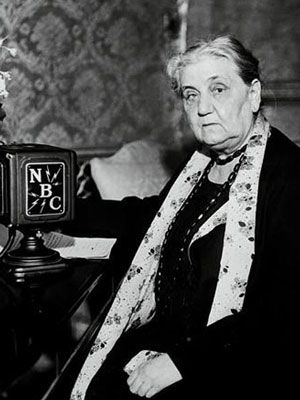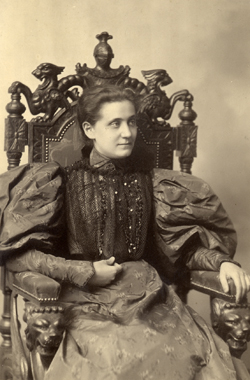 |
| Jane Addams |
Addams, a sickly child, was just two when her mother died. Her father encouraged Jane's desire for a higher education. She became part of the first generation of U.S. women to have significant access to college and was one of many well-educated women who would make their era one that historians labeled "Progressive."
After great success at Rockford Seminary Addams found herself adrift, searching for some useful purpose for her education. Her father's sudden death in 1881 compounded her depression. She considered medical school but dropped out within weeks. Two trips to Europe and deepening religious convictions helped put Addams on a path toward achievement and acclaim.
In 1887 she visited England's Toynbee Hall, where reformers were seeking to improve the lives of workers exploited by the Industrial Revolution. Back home a group of Smith College women had just founded the College Settlement Association to assist the millions pouring into U.S. factories and cities.
  |
In 1889 Addams and college friend Ellen Starr opened their own settlement house in a former mansion at 335 Halsted Street. These small-town Protestant ladies soon found themselves purveying social services to families who were mostly Italian, Catholic, and poor. Initially emphasizing cultural uplift—art, music, and good manners—Hull-House under Addams's pragmatic supervision refocused on such pressing neighborhood needs as garbage collection and playgrounds.
By 1900, of more than 100 settlement houses in U.S. cities, Hull-House was the most famous, thanks to Addams's skills in writing, lecturing, public relations, and fundraising. Possibly the best-known U.S. woman, she was acclaimed a motherly saint before she was even 40. Unlike most white progressives, Addams worked with African-American reformers. Her fame peaked in 1910 when she published Twenty Years at Hull-House, her autobiography.
 |
| Young Jane Addams |
When the United States entered World War I in 1917, Addams found herself vilified by some as an unpatriotic defeatist and ridiculed by others as a naive female unable to understand the necessity of warfare. When the Russian Revolution produced a communist regime, "red" and "Bolshevik" were added to the failings listed by Addams's critics.
Addams spent much of the 1920s outside the United States. A long effort by her friends finally paid off when Addams shared the 1931 Nobel Peace Prize with Columbia University's president. Her life's work imbued with new relevance by the Great Depression, Addams died of cancer just days after her pioneering achievements were celebrated by admirers, including First Lady Eleanor Roosevelt.